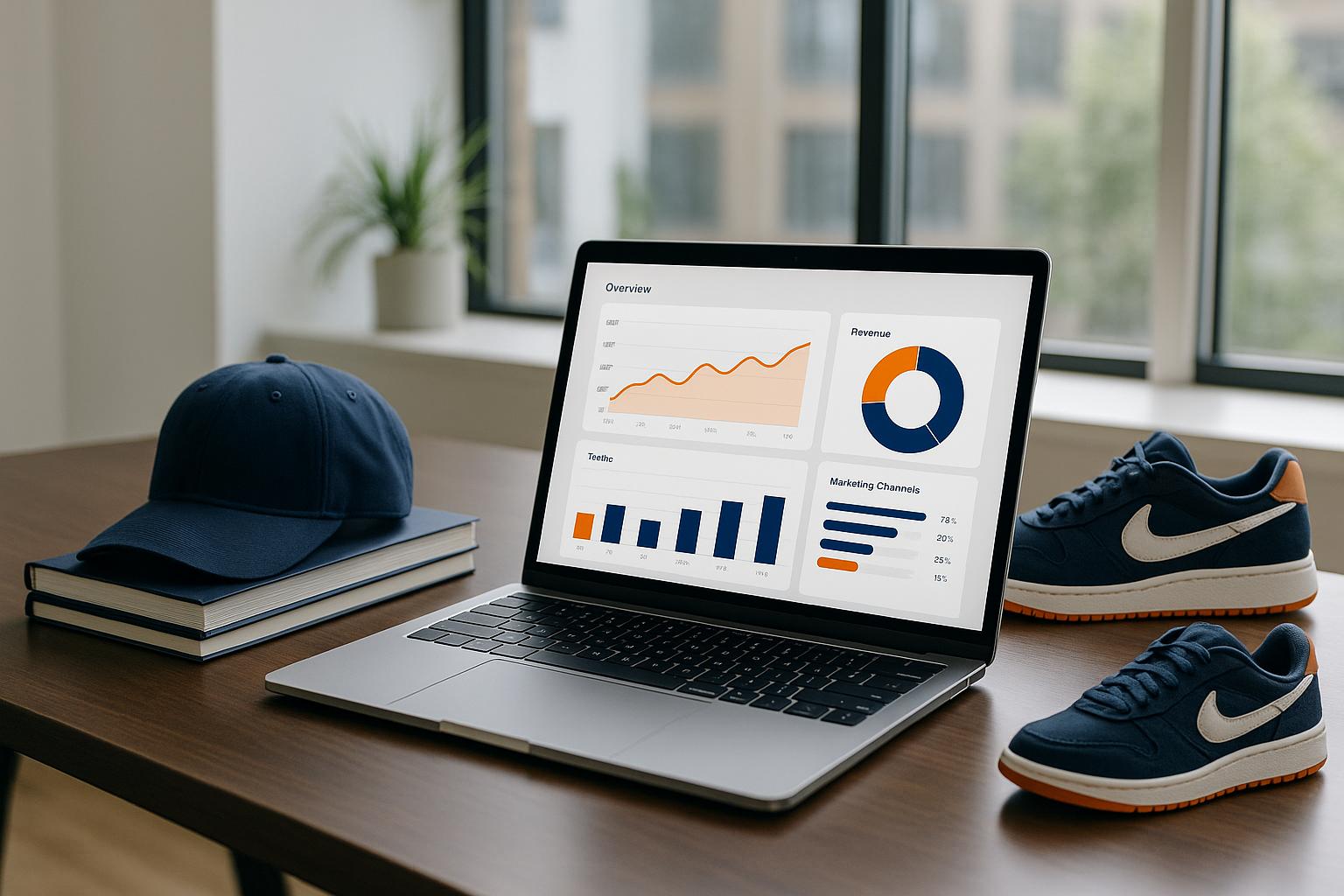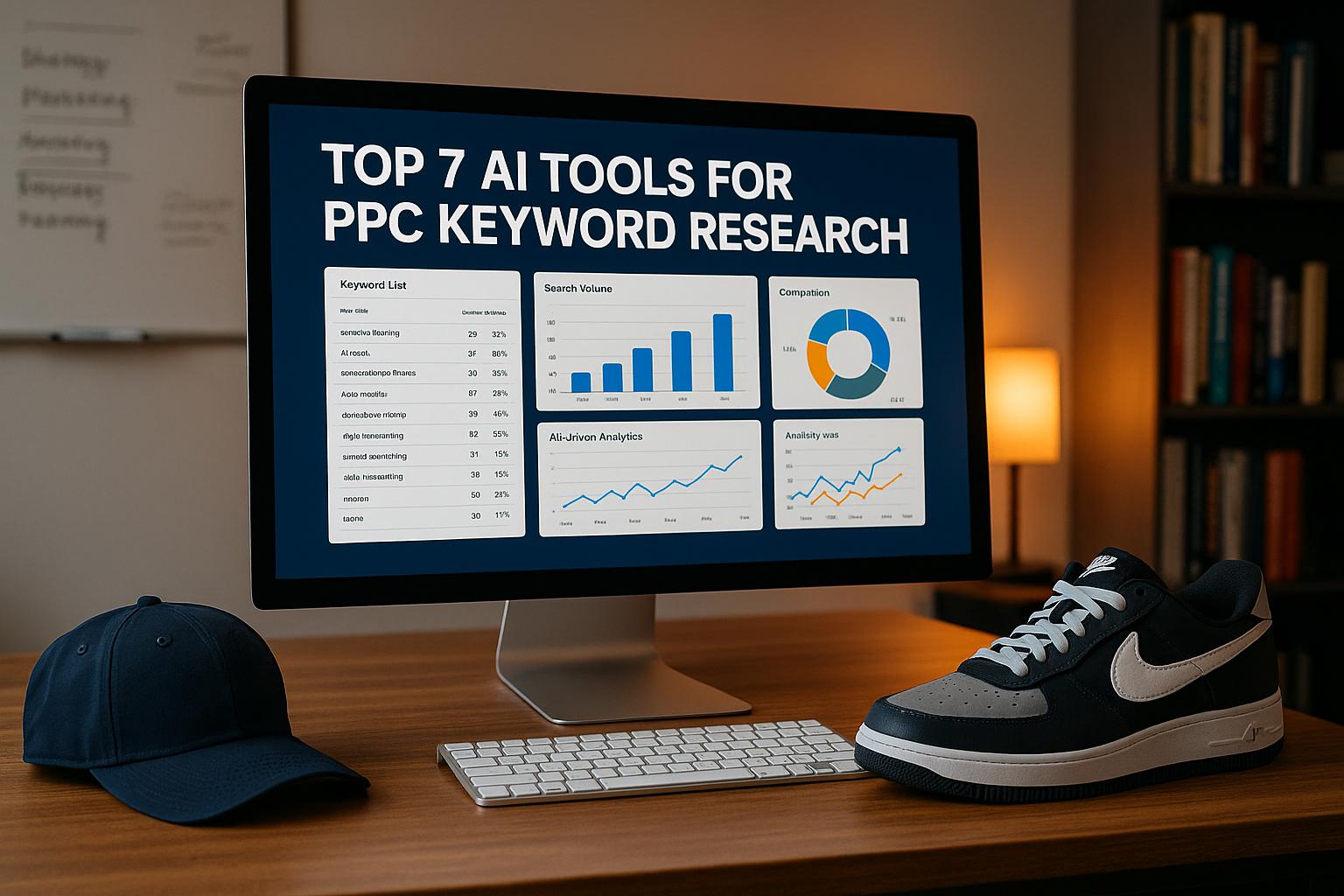Dynamic content optimization is transforming how businesses engage with users by delivering personalized, real-time content tailored to individual preferences and behaviors. Powered by AI, this approach automates the process of adjusting website content, emails, and ads for each user, boosting engagement and conversion rates. Here’s what you need to know:
- What it is: AI uses data like browsing habits, purchase history, and location to predict and display the most relevant content for each user instantly.
- Why AI matters: Machine learning processes vast amounts of data to uncover patterns, predict user behavior, and automate personalization at scale.
- Key benefits: Higher conversion rates, improved user engagement, and scalable marketing efforts. For example, Amazon generates 35% of its sales through personalized recommendations.
- Best practices: Choose the right AI tools, focus on data quality, and continuously measure and refine your strategy.
AI-driven content optimization is essential for businesses aiming to stay competitive in a fast-moving digital landscape. By combining data insights with automation, companies can create tailored experiences that resonate with users and drive results.
How to Create SEO Optimized Marketing Content with AI Agents
Key Features of AI Tools for Dynamic Content Optimization
AI tools bring a new level of precision and efficiency to how businesses create and deliver personalized content. These tools combine advanced algorithms with real-time data to predict user needs, adapt content, and improve performance continuously.
Predictive Analytics and User Behavior Insights
At the heart of AI-driven content optimization are machine learning algorithms that analyze historical data to uncover patterns and relationships that humans might overlook. These systems process data like browsing habits, purchase histories, and engagement metrics to deliver actionable insights. Rather than just reflecting on past behavior, they focus on predicting future trends – such as identifying customers likely to churn or those with high purchase intent. This allows businesses to make timely adjustments to their content strategies.
AI’s speed is a game changer. Tasks that once required hours of manual analysis are now completed in seconds. For instance, companies integrating AI into their SEO strategies report an average 30% boost in search engine rankings within six months. With around 60% of users relying on voice search to find content, AI’s ability to optimize for natural language queries has become increasingly crucial.
"There is a saying going around now – and it is very true – that your job will not be taken by AI. It will be taken by a person who knows how to use AI. So, it is very important for marketers to know how to use AI."
– Christina Inge, author of Marketing Analytics: A Comprehensive Guide and Marketing Metrics and instructor at the Harvard Division of Continuing Education’s Professional & Executive Development
These predictive capabilities also support real-time adjustments, ensuring content remains relevant as user behaviors shift.
Real-Time Content Personalization
One of the most visible benefits of AI in content optimization is its ability to deliver dynamic, personalized experiences. By analyzing user data – such as browsing history, purchase patterns, and demographics – AI tailors content to match individual preferences in real time. Unlike traditional personalization methods that rely on static data, AI adapts continuously to reflect each user’s evolving behavior.
The results speak for themselves: McKinsey research reveals that companies embracing hyper-personalization generate 40% more revenue than their peers. Nearly half of customers prefer personalized offers and recommendations, highlighting the demand for tailored experiences. AI-powered platforms extend this personalization across multiple channels, including email campaigns, mobile apps, and websites, ensuring a seamless and consistent user experience. Tools like automated A/B testing and behavioral analysis further refine these strategies by identifying which content variations resonate most with different audience segments.
Automated Content Analysis and Improvement
AI doesn’t just personalize content – it also enhances it. Using natural language processing (NLP) and machine learning, these tools analyze existing content to uncover patterns, themes, and audience sentiments that might otherwise go unnoticed. Features like text classification, sentiment analysis, and entity recognition help businesses organize their content, understand emotional responses, and identify key topics for optimization.
The time savings are remarkable. Thomson Reuters estimates that generative AI can save professionals up to 200 hours of manual work annually for tasks like content optimization. AI systems can process massive datasets quickly, revealing insights that traditional methods might miss. They use both supervised learning, which relies on training data, and unsupervised approaches that identify new trends organically. These tools also monitor performance metrics and flag content for updates as user preferences evolve, ensuring messaging stays relevant and effective.
Main Benefits of AI-Driven Dynamic Content Optimization
AI-driven dynamic content optimization isn’t just a buzzword – it’s a game-changer for businesses looking to improve key metrics like conversion rates, relevance, and scalability. By harnessing advanced AI tools, companies can deliver tailored experiences that resonate with customers and drive measurable results.
Higher Conversion Rates with Personalized Experiences
Personalized content powered by AI can lead to a significant boost in conversion rates. For example, companies like Amazon generate 35% of their sales from recommendations, while The North Face has reported a 60% increase in click-through rates, and Sephora saw an 11% rise in conversions alongside a 30% uptick in user engagement. These success stories highlight how tailored experiences can directly impact customer behavior.
The numbers back this up: 91% of customers prefer to shop with brands that offer relevant recommendations, and retailers providing tailored experiences enjoy a 20% higher Net Promoter Score. Netflix is a prime example of personalization’s impact – it saves $1 billion annually on customer retention through its AI-driven recommendation systems. These personalized approaches not only improve conversions but also foster stronger, long-term relationships with customers, reducing churn and increasing lifetime value.
Better Content Relevance and Engagement
AI takes content relevance to the next level by identifying audience segments and behaviors that traditional methods often overlook. Companies that embrace personalization see tangible benefits – fast-growing businesses generate 40% more revenue from personalized experiences.
Real-world examples illustrate this power: a fashion brand increased revenue by 22% by targeting "night owl deal hunters", while a publisher boosted subscription revenue by 35% by delivering early-morning content. The impact spans demographics, with 81% of Gen Z buyers and 57% of millennials in the U.S. citing personalization as a key factor in their purchase decisions.
As Rishabh Bitola, Managing Director at Infotyke, puts it:
"People respond when it feels relevant."
Efficient Scaling of Marketing Efforts
AI doesn’t just improve personalization – it makes it scalable without requiring a proportional increase in resources. This scalability is evident in several success stories:
- Kia achieved a 517% increase in unaided brand awareness and an 8% lift in vehicle sales through an AI-powered digital campaign.
- Devo saw a 300% jump in content engagement and cut production time by 50% with AI-driven content atomization.
- Yum Brands experienced double-digit engagement growth with AI-enhanced email campaigns.
- Spotify reduced email bounce rates from 12.3% to 2.1%, translating into an additional $2.3 million in revenue.
The efficiency gains extend across marketing functions. 71% of social marketers now use AI and automation tools, with 82% reporting positive outcomes. Forward-looking strategies reflect this trend: 75% of businesses plan to increase AI spending on content creation by 2030. It’s clear that AI isn’t just a tool – it’s becoming a cornerstone for scaling marketing efforts effectively.
sbb-itb-d6d4d8b
Best Practices for Implementing AI-Driven Dynamic Content Optimization
To make the most of AI-driven personalization, companies need a thoughtful approach. Rushing the process can lead to poor adoption and disappointing ROI, while a strategic and well-planned implementation often delivers the best outcomes.
Choosing the Right AI Tools
Start by clearly defining your goals. Are you aiming to improve conversion rates, make your content more relevant, or scale your marketing efforts? Involve key stakeholders early to ensure everyone is aligned on these objectives.
Scalability is another crucial factor. Your AI solution should be able to handle increasing data volumes and adapt to changing business needs over time. Seamless integration with your current systems is also essential to avoid creating data silos that could hinder efficiency.
Don’t overlook data security and compliance, especially with U.S. privacy regulations. Check the vendor’s history for any security breaches and confirm their certifications. A strong track record in these areas, combined with user-friendly interfaces and reliable customer support, can make a big difference in how quickly your team adopts the tool.
It’s also important to conduct a detailed ROI analysis. Factor in all costs, including licensing, implementation, training, and maintenance. Look for vendors with transparent pricing and a proven ability to deliver measurable results. Consider the tool’s ability to evolve with emerging trends, ensuring it remains relevant as AI technology advances.
Once you’ve selected the right tool, focus on building a solid data collection and integration strategy to maximize its potential.
Data Collection and Integration Strategies
Start by assessing your business needs. According to a 2024 McKinsey report, 72% of organizations have integrated AI into at least one function. This shows that with the right planning, successful AI integration is achievable for most companies.
AI thrives on clean, accurate data. Before implementing your tool, ensure your data quality is up to par and identify the processes where AI could make the biggest impact. Investing in specialized AI talent or providing comprehensive training for your team can also significantly improve your chances of success.
Test your AI solutions in a controlled environment before rolling them out on a larger scale. This allows you to address any issues without disrupting daily operations. Effective change management is equally important – engage employees through open communication, addressing their concerns and emphasizing how AI will enhance their roles rather than replace them.
"AI adoption is as much a cultural shift as a technological one"
Additionally, a Forbes report highlights that 64% of business owners see AI as a powerful tool for improving customer relationships. For example, in 2024, Accenture optimized its data collection processes, cutting down time and boosting sales.
Measuring Success and Optimizing Over Time
After implementation, focus on continuous measurement and refinement to keep improving. Define clear KPIs that align with your original goals. These could include metrics like conversion rates, engagement levels, team efficiency, or customer satisfaction.
Regularly monitor your AI systems to ensure they perform as expected. Create feedback loops where real-world insights can lead to timely adjustments, rather than relying solely on theoretical predictions.
Celebrate milestones to maintain momentum and identify internal champions who can help guide others, solve problems, and find new ways to improve. Expand AI adoption gradually, starting with high-impact areas before tackling more complex challenges. This step-by-step approach builds confidence and allows for fine-tuning along the way.
Dan Hou captures the potential perfectly:
"There’s a whole new world of AI optimization that has barely scratched the surface, that is like the new search engine optimization"
Finally, keep an eye on how your brand is being mentioned and address any misinformation generated by AI systems. Be prepared to issue corrections when needed. By automating repetitive tasks, AI tools free up your team to focus on strategy and decision-making. This ongoing optimization ensures your personalized content stays aligned with changing user behavior and expectations.
Conclusion and Key Takeaways
AI-powered dynamic content optimization is reshaping digital marketing. Major brands have reported KPI increases of up to 259% and short-term sales growth ranging from 1.2 to 7.4 times. These numbers highlight the competitive advantage of AI-driven personalization.
With AI, marketers can tailor ads in real-time, ensuring creatives align with individual user preferences. Whether it’s refining ad campaigns, customizing email strategies, or personalizing website content, AI adapts to make every interaction relevant and engaging.
However, success doesn’t come automatically – it requires thoughtful planning and creativity. As Kerry Harrison, an AI educator and copywriter, explains:
"There’s still a huge need for human writers for human creativity, for human thought and strategy and to come to these models with our own objectives and our own ideas".
The need for AI in marketing is clear: 88% of marketers believe increasing automation and AI is critical to meeting customer expectations and staying ahead. Yet, only 35% of companies currently use AI in their operations, leaving a massive opportunity for early adopters.
For those ready to take advantage, professional guidance can make all the difference. JeffLizik.com provides expert digital marketing consulting, offering services like AI-driven marketing systems and detailed 12-month marketing plans to help businesses maximize their AI investments.
The future belongs to businesses that combine AI with human creativity. With proper planning, quality data, and consistent optimization, dynamic content optimization is no longer just an option – it’s a must for staying competitive in today’s marketing landscape.
FAQs
What makes AI-powered dynamic content optimization different from traditional personalization techniques?
AI-powered dynamic content optimization uses real-time algorithms and user data to adjust content on the fly, aligning it with individual preferences, behaviors, and context. Unlike traditional personalization, which depends on static rules and fixed parameters, this method adapts fluidly to changing user needs.
With AI, businesses can provide content that’s highly relevant and engaging for each user, enhancing customer experiences and achieving stronger outcomes. This dynamic approach keeps content fresh and aligned with evolving user expectations and market shifts.
What steps can businesses take to successfully implement AI tools for optimizing content?
To make the most of AI tools for content optimization, businesses should start by setting clear goals and understanding how AI can align with their objectives. Use AI-generated content as a starting point, then tailor it to reflect your brand’s tone and meet the preferences of your audience. Structuring content with headers, bullet points, and lists can also enhance how effectively AI tools process and refine your material.
AI can also handle time-consuming tasks like keyword research or scheduling posts, which frees up time for more creative work. Regularly analyze performance metrics to adjust your AI strategies and keep improving results. The key to success lies in staying flexible and consistently refining your approach to fully leverage AI’s potential in content optimization.
How can businesses evaluate the success of AI-driven personalization in boosting conversions and user engagement?
To understand how well AI-driven personalization is working, businesses can look at important metrics like conversion rates, time spent on site, click-through rates, and return on investment (ROI). These numbers reveal how well personalized content connects with users and encourages them to take action.
Analytics tools make it easier to spot trends, such as more engagement with customized content or a boost in sales from personalized recommendations. By consistently reviewing this data, companies can ensure their AI strategies stay in tune with both their business objectives and what their customers want.







